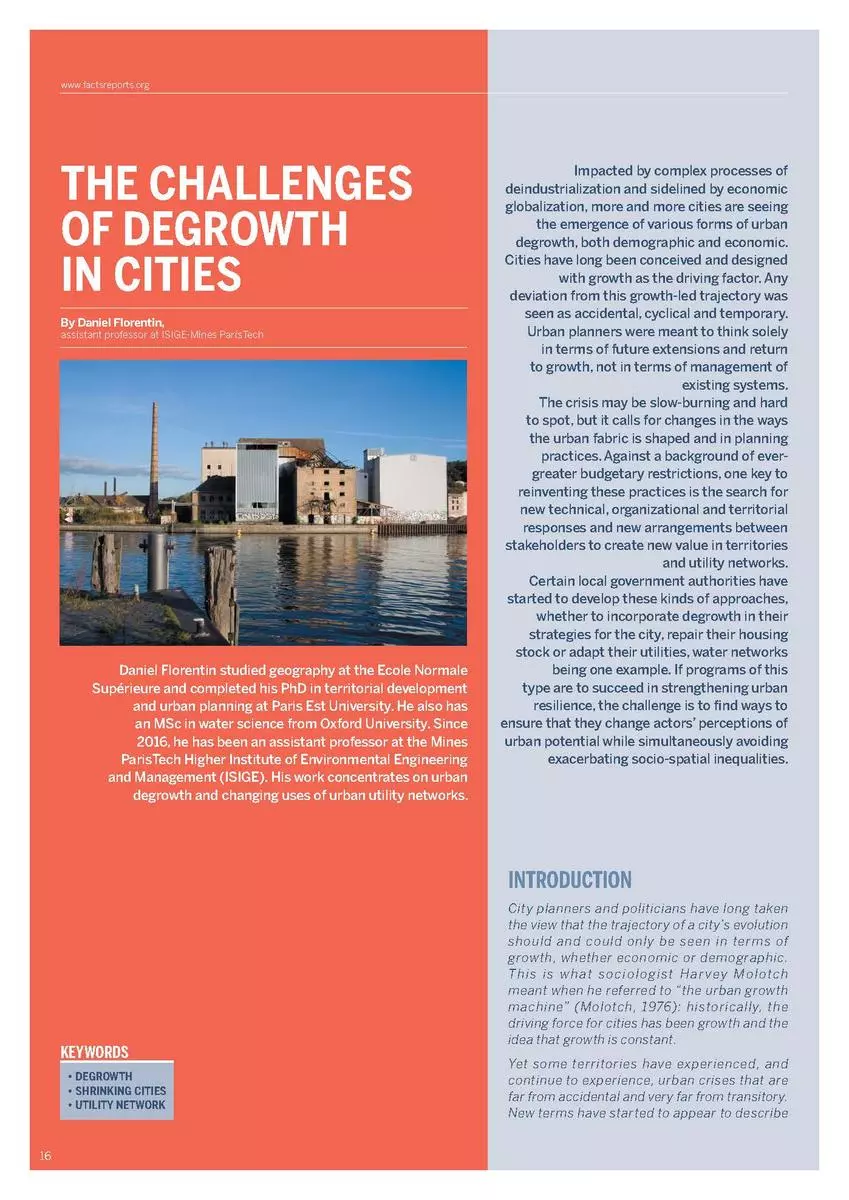By Daniel Florentin, assistant professor at ISIGE-Mines ParisTech
Impacted by complex processes of deindustrialization and sidelined by economic globalization, more and more cities are seeing the emergence of various forms of urban degrowth, both demographic and economic. Cities have long been conceived and designed with growth as the driving factor. Any deviation from this growth-led trajectory was seen as accidental, cyclical and temporary. Urban planners were meant to think solely in terms of future extensions and return to growth, not in terms of management of existing systems.
The crisis may be slow-burning and hard to spot, but it calls for changes in the ways the urban fabric is shaped and in planning practices. Against a background of evergreater budgetary restrictions, one key to reinventing these practices is the search for new technical, organizational and territorial responses and new arrangements between stakeholders to create new value in territories and utility networks.
Certain local government authorities have started to develop these kinds of approaches, whether to incorporate degrowth in their strategies for the city, repair their housing stock or adapt their utilities, water networks being one example. If programs of this type are to succeed in strengthening urban resilience, the challenge is to fi nd ways to ensure that they change actors’ perceptions of urban potential while simultaneously avoiding exacerbating socio-spatial inequalities.



